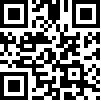ShockWatch 2nd generation
Electronic products during transportation, in addition to being damaged by falling, can also be damaged by vibration and resonance. In normal transportation, electronic components or terminal electronic products can withstand random vibrations of up to 20 minutes and up to 1G of gravity, with vibration frequencies ranging from 3 Hz to 50 Hz. However, running trucks and train carriages can generate a vibration frequency of 70 hertz. When the train carriage passes through the connection of the steel rail, it can generate vibrations of 30 to 300 hertz. The walls of container ships in operation and the cargo floor of cargo planes can generate vibrations of 2 to 200 hertz.
Proper packaging can to some extent alleviate the impact of these vibrations and impacts. Designed by packaging designers; Suitable packaging; To prevent these electronic devices from coming into contact with the side of the packaging box and have sufficient elasticity to reduce impact and vibration.
However, even with the most suitable packaging, these electronic products still pose a risk of impact and vibration during transportation. Changes in transportation methods or environments can cause damage to electronic products during transportation. For example, if a cargo falls off a crane or touches a bulkhead. There is only so much reliable packaging can do.
The shipper must know whether the goods have been damaged and when. If a comprehensive monitoring plan is in place to determine whether the goods have been hit or shaken, the shipper can determine whether these electronic devices have been damaged before installing them. Moreover, shippers can reduce the risk of future damage to goods by adjusting logistics operations. Especially high-end electronic products are prone to damage during transportation, which has caused significant losses to these electronic product companies. Due to the increasing precision and miniaturization of modern electronic products and components, they are becoming more sensitive to external impact forces and vibrations. Therefore, when transporting high-end electronic products, more caution is needed;
The ShockWatch 2nd generation is a disposable pass\/fail type device that can indicate whether fragile items have been dropped during transportation and storage. This monitor can be turned on during use and will turn bright red when the impact force exceeds a certain value. Once it changes color, it cannot be changed. Each ShockWatch 2 generation has a unique serial number for reference.
Main specifications:
|
Sensitivity range
|
5-50G
|
|
Duration of collision
|
0.5-50 milliseconds
|
|
Deviation allowable range
|
+\/- 15%
|
|
Applicable temperature
|
- 25° C to 80° C
|
|
Security
|
Anti tampering; Has a serial number
|
|
Usage period
|
Under standard temperature and pressure (20 ° C, 1 atmosphere) for 2 years
|
|
size
|
1.69 x 1.69 x 0.25 inches (42.93 mm x 42.93 mm x 6.35 mm)
|
Label Color Selection;
When choosing the ShockWatch 2nd generation collision display label, you need to know two things: the size and weight of the product packaging. Referring to the selection guide is just the beginning. You also need to refer to the fragility and packaging of the shipped goods to further determine which label is most suitable for your application.
